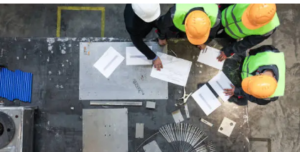Sustainable commercial construction practices reduce environmental impact and improve the health of occupants. They also help to increase profitability and ROI.
 Building with eco-friendly materials can decrease recurring costs for maintenance and utility bills. These materials have a low carbon footprint and contain less volatile organic compounds, which helps to reduce air pollution. For more eco-friendly commercial builder Adelaide, click here.
Building with eco-friendly materials can decrease recurring costs for maintenance and utility bills. These materials have a low carbon footprint and contain less volatile organic compounds, which helps to reduce air pollution. For more eco-friendly commercial builder Adelaide, click here.
Eco-friendly materials
Eco-friendly construction uses sustainable materials to create beautiful and energy-efficient buildings. These practices can help reduce a building’s environmental footprint, save money on energy bills, and make healthy indoor environments for the occupants. Sustainable construction can also improve a building’s overall value and durability.
Eco-friendly materials are renewable, recycled, and non-toxic. They also use less energy to manufacture than traditional materials. They also emit fewer volatile organic compounds (VOCs) and promote healthier indoor air quality. These benefits make eco-friendly construction an excellent choice for commercial buildings.
This Eco-Friendly Building features a green roof, solar panels, and a water-harvesting system. The green roofs absorb heat from the sun, reducing the need for heating and cooling systems. The building’s exterior and interior walls are insulated to minimise energy consumption. Its use of reclaimed timber also reinforces its sustainability. Its use of natural lighting and energy-efficient light bulbs helps to cut down on the need for artificial illumination.
Water-efficient systems
Incorporating eco-friendly systems into a commercial building helps reduce water consumption. It can be achieved through installing low-flow toilets, showerheads and taps. These systems are designed to save water without sacrificing user experience.
Rainwater harvesting and greywater recycling systems are other ways to reduce building water waste. These systems collect rainwater from rooftops and store it for non-potable purposes such as landscape irrigation and toilet flushing. They also facilitate the burden on municipal water supply systems.
A green roof can also improve air quality by absorbing pollutants and reducing greenhouse gas emissions. It can also increase energy efficiency by insulating the structure and decreasing heat loss.
Other eco-friendly systems include using natural materials low in VOCs (volatile organic compounds). These reduce harmful toxins in the indoor environment and can improve health. It helps employees to be more productive and focused in the workplace. It is especially important in a healthcare setting.
Increased ROI
Sustainable construction is often seen as a more expensive upfront undertaking, but it can save businesses money over time. For example, eco-friendly insulation helps to effectively keep buildings cool in the summer and warm in the winter, reducing energy costs and maintenance expenses. Additionally, eco-friendly construction practices reduce rework and waste by streamlining project workflows and implementing just-in-time sourcing.
Another area where sustainability is making an impact is water efficiency. Using sustainable landscaping techniques like xeriscaping and rainwater harvesting can significantly reduce the strain on local water supplies. It can also help occupants save on water bills.
Increased community engagement
As more people become environmentally conscious, green building has become an increasingly important aspect of the construction industry. It involves using eco-friendly materials, implementing energy-efficient systems, and employing sustainable design principles to reduce a building’s environmental impact. It can also help improve occupants’ quality of life and increase economic growth.
A growing consensus recognises buildings and communities’ role in creating thriving societies. This research explores the inherent social value of good building design by analysing a unique Australian case study: U City, an extreme mixed-use high-rise that hosts retirement living, disability housing, and services for some of the community’s most vulnerable groups and commercial tenants.
The project team has committed to using a variety of green infrastructure, such as water tanks, rainwater harvesting and rooftop solar panels, to minimise the building’s footprint. Almost all of the building’s energy needs are met with renewable energy sources. It also features a green roof that enhances biodiversity and significantly decreases the urban heat island effect. For more eco-friendly commercial builder Adelaide, click here.
